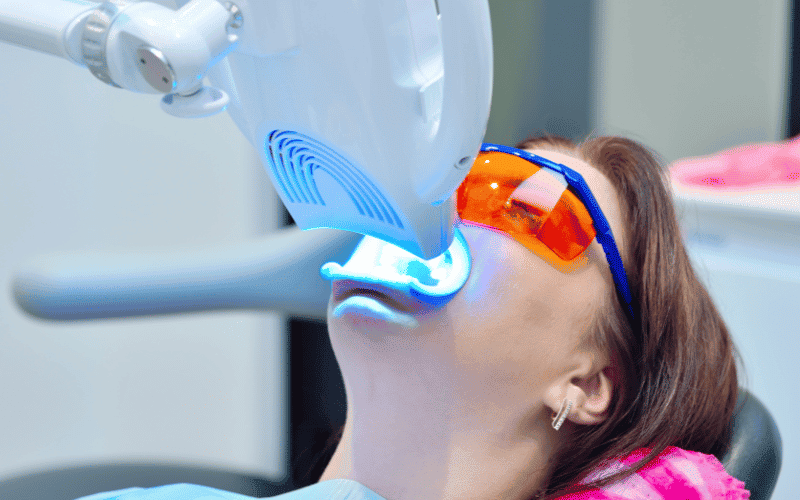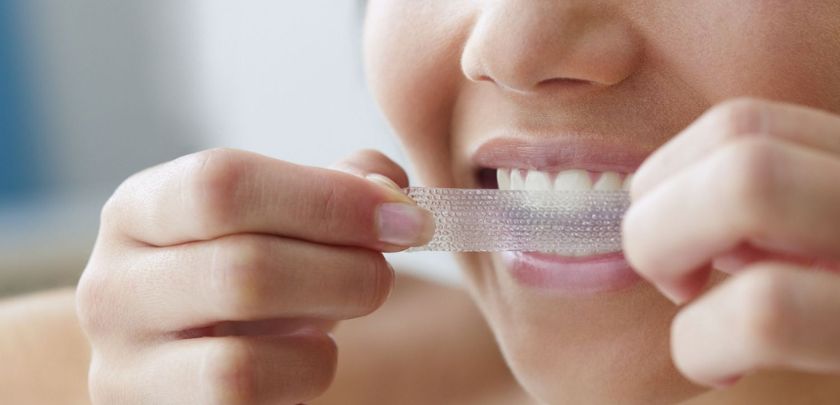Book Now
Teeth Whitening for Sensitive Teeth: What You Need to Know
Millbrae, CA

A radiant white smile can leave a lasting impression and increase self-confidence. Yet, for those with sensitive teeth, achieving that radiant smile can seem out of reach. Teeth whitening is a popular cosmetic treatment, but it often comes with challenges for individuals experiencing sensitivity. If you find yourself longing for a whiter smile but worry about discomfort, you are not alone.
This blog explores what teeth sensitivity is, how whitening can affect it, and offers practical advice on achieving a brighter smile safely. Whether you are considering professional treatments or at-home solutions, understanding your options is key to balancing results with comfort.
Understanding Teeth Sensitivity
A frequent dental condition known as teeth sensitivity is characterized by pain or discomfort when teeth are subjected to specific stimuli. This can include hot, cold, or sweet foods and beverages.
The sensitivity occurs when the protective enamel on your teeth wears down, exposing the underlying dentin. Dentin contains tiny tubules that lead to nerve endings. When these are exposed, they can trigger sharp or throbbing pain.
Several factors can cause teeth sensitivity, including enamel erosion, gum recession, or excessive brushing. Other causes might be tooth decay or recent dental work.
For many, sensitivity can be managed with adjustments to oral care routines. However, if you experience persistent or severe discomfort, it is essential to consult a dentist. They are able to identify the underlying reason of your sensitivity and suggest suitable treatments or adjustments to your dental care routine.
The Basics of Teeth Whitening
A cosmetic procedure called teeth whitening is used to make your teeth appear whiter. It works by removing stains and discoloration, often resulting in a brighter, whiter smile. The procedure normally entails applying a whitening substance to the teeth, commonly hydrogen peroxide or carbamide peroxide, which dissolves stains.
There are various methods of teeth whitening. Whitening strips are thin, flexible plastic strips coated with a whitening gel. They are applied to the teeth for a specified period. Whitening gels are similar but are usually applied with a brush or tray. Whitening toothpaste contains mild abrasives and chemical agents that help remove surface stains and prevent new stains from forming.
Each method varies in effectiveness, cost, and duration of results, with professional treatments generally offering quicker and more noticeable results compared to over-the-counter products.
Safe Whitening Options for Sensitive Teeth
When it comes to teeth whitening Millbrae, sensitivity can be a significant concern for many people. Fortunately, there are several strategies and options available to help achieve a whiter smile while minimizing discomfort. Here is a detailed look at safe whitening options for sensitive teeth:
Consulting a Dentist
One of the most crucial steps in safely whitening sensitive teeth is consulting a dentist. Professional advice is invaluable in managing sensitivity and achieving optimal results. In addition to assessing the state of your gums and teeth, dentists can find any underlying problems that may be exacerbating your sensitivity and suggest individualized treatment plans.
Professional teeth-whitening procedures that are especially made to be kinder on delicate teeth might be provided by a dentist. These treatments often use lower concentrations of bleaching agents or include desensitizing agents to protect your enamel and reduce discomfort. Additionally, a dentist can provide guidance on proper whitening techniques and help you choose the right products to use at home.
Local dental practices can provide specialized treatments and personalized care to ensure that your whitening experience is both effective and comfortable.
Desensitizing Toothpaste
Desensitizing toothpaste is another effective option for managing sensitivity during teeth whitening. Potassium nitrate and stannous fluoride, two ingredients in these toothpastes, assist prevent pain signals from getting to the nerves in your teeth.
By using desensitizing toothpaste, you can reduce the likelihood of experiencing discomfort during and after whitening treatments.
It is advisable to start using desensitizing toothpaste a few weeks before beginning any whitening regimen. This allows the toothpaste to work effectively in reducing sensitivity and preparing your teeth for the whitening process. Additionally, continuing to use desensitizing toothpaste during and after whitening can provide ongoing relief and help maintain comfort.
Whitening Alternatives
For those with sensitive teeth, there are several alternative whitening options that are less likely to cause discomfort:
- Whitening Toothpaste with Fluoride: Whitening toothpaste that contains fluoride can be a gentler option for achieving a brighter smile. Fluoride helps strengthen enamel and protect against sensitivity while providing mild whitening benefits.
This type of toothpaste can help remove surface stains and prevent new ones from forming, all while being kinder to sensitive teeth.
- Whitening Products for Sensitive Teeth: Certain over-the-counter teeth-whitening treatments are designed especially for people with sensitive teeth. These products often use lower concentrations of active ingredients or incorporate desensitizing agents to minimize discomfort.
When selecting a whitening product, look for labels indicating that it is designed for sensitive teeth.
- Less Abrasive Treatments: Consider whitening options that are less abrasive on your enamel. Products with a lower concentration of peroxide or those designed for sensitive teeth are usually gentler and less likely to increase sensitivity.
Additionally, professional whitening treatments provided by a dentist can be customized to ensure they are effective yet gentle.
- Natural Whitening Methods: Some people opt for natural whitening methods, such as using baking soda or activated charcoal. While these methods may not provide the dramatic results of professional treatments or over-the-counter products, they can be a milder alternative for those with sensitive teeth.
However, it is essential to use these methods cautiously and consult with a dentist to ensure they are safe and appropriate for your situation.
Tips for Minimizing Sensitivity During Whitening
- Preparation: Before starting any whitening treatment, ensure your teeth are in good health. Address any existing dental issues such as cavities or gum disease. Using a desensitizing toothpaste for a few weeks prior can also help reduce sensitivity.
- Usage Tips: Follow the instructions for any whitening product carefully. Avoid overuse, as this can increase sensitivity. If using whitening strips or gels, ensure they fit well and do not come into contact with your gums more than necessary.
- Aftercare: After whitening, your teeth may be more sensitive. Use fluoride treatments or desensitizing products to help manage discomfort. Avoid extreme temperatures in food and drinks for a few days post-treatment. Maintaining good oral hygiene and regular dental check-ups will help keep your teeth healthy and reduce sensitivity over time.
Balancing the desire for a whiter smile with the need to manage sensitive teeth requires careful consideration and the right approach. Consulting with a dental professional is crucial to finding a solution that minimizes discomfort and maximizes results. By choosing appropriate whitening products, following proper usage tips, and incorporating effective aftercare, you can enjoy a brighter smile without compromising your comfort.



